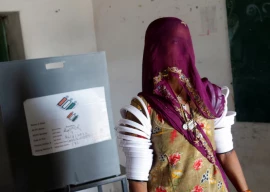
Incidence of TB in Pakistan is around quarter of a million people annually, and with rising rates of drug resistance making the problem particularly acute. There are many reasons Pakistan continues to do badly in managing TB, ranging from poor funding to donor dependent programmes, lack of awareness and disparity across provinces. Yet, there is one other reason that we suffer, and it is both critical to our battle against TB and other infectious diseases, and an underappreciated factor that hinders our efforts in improving the health of those who continue to suffer.
Pakistan is completely dependent on foreign funding and foreign manufactured TB diagnostics. Not only that, but all the consumables that are needed for state-of-the-art TB diagnostics, such as the “GeneXpert” are also imported, making the challenge both expensive and also particularly sensitive to international trade, commerce and funding from aid agencies.
So why is that, and can we do something to change?
The first reason for our lackluster performance, despite having dozens of engineering institutions and a high burden of disease, is the lack of awareness among engineers, scientists and innovators about what TB is, what exists and what are the major challenges in creating new diagnostics. Nearly all TB related research activity in the country is carried out by infectious disease physicians and public health professionals with little awareness among scientists and engineers to come up with indigenous, rigorous and affordable diagnostics. There is very little, if any, technical capacity among our scientists and engineers to come up with new diagnostics. This is driven not by competence or capability, but largely due to poor awareness. With the lack of awareness and engagement among the two sectors of research, medical and technological, there is little chance to come up with new solutions that meet the growing demands of robust, point-of-care diagnostics.
Second is the weakness of the top-down incentive mechanism. The national TB control programme and other projects pursued by federal and provincial governments have failed to make TB diagnostic availability a priority. These programmes have budget line items that seem fairly comfortable with foreign aid and uninterested in creating local technology or inspiring local innovators.
Third, the medical device industry remains weak, fragmented and poorly regulated. Diganostic developers across the world benefit from a strong research pipeline, a structured mechanism for regulation, and an interest from investors to shepherd the process of development and implementation. Investors are unlikely to engage due to lack of a clear framework from the Drug Regulatory Authority of Pakistan (DRAP), that is also in charge of medical devices. The DRAP continues to face political battles and how effective it is remains questionable. Widespread presence of poor quality health commodities, and lack of serious action from the government to control quality, also make it difficult for a new investors and entrepreneur to pursue medical devices.
So why is status quo bad and what can we do?
The status quo is unsustainable because it relies on foreign funding that is increasingly becoming precarious given the global political trends. If international donor funding disappears tomorrow, our TB control programme (along with other disease eradication strategies) will be deal a deathly blow that may have long-term social and economic consequences.
What needs to be done is a recognition of the challenge ahead, the weak technical ground on which we stand, and the realisation that a lot more is within reach. The national programmes must focus on local research and development, increase awareness among scientists, engineers, developers and innovators and make it possible for the private sector to invest in developing diagnostics. It sounds like a tall order, but against the backdrop of global trends, it is the only way forward if we are to create a sustainable strategy to combat deadly diseases.
Published in The Express Tribune, March 28th, 2017.
Like Opinion & Editorial on Facebook, follow @ETOpEd on Twitter to receive all updates on all our daily pieces.
















-(1)1714116455-0/Heeramandireactions-(2)-(1)1714116455-0-270x192.webp)










1714024018-0/ModiLara-(1)1714024018-0-270x192.webp)









COMMENTS (1)
Comments are moderated and generally will be posted if they are on-topic and not abusive.
For more information, please see our Comments FAQ